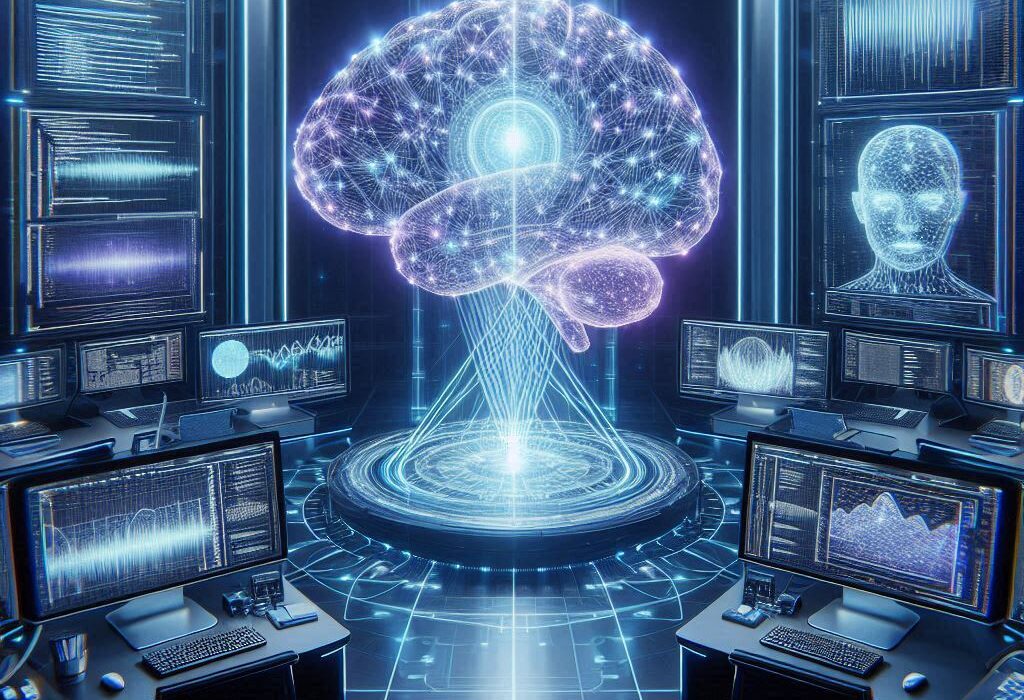For centuries, humanity has looked up at the night sky in wonder, seeking to understand the true nature of the cosmos. From the earliest astronomers mapping the stars to the physicists of today probing the deepest laws of nature, one realization has transformed our view of reality: most of the universe is invisible. The stars, planets, and galaxies that fill our telescopes account for only a small fraction of what actually exists. The vast majority—around 95 percent—of the cosmos is made of mysterious entities known as dark matter and dark energy.
These two components dominate the universe, shaping its structure and destiny. Yet their true nature remains one of the greatest unsolved puzzles in science. Dark matter appears to bind galaxies together with invisible gravity, while dark energy drives the accelerated expansion of the cosmos. They act as opposing forces: one pulls, the other pushes. Understanding them is essential not only to cosmology but to the fundamental question of what reality itself is made of.
The Known Universe and the Invisible Majority
Everything familiar—atoms, molecules, light, and life—is composed of ordinary matter, or baryonic matter. This includes protons, neutrons, electrons, and the radiation they interact with. For a long time, scientists assumed that this visible matter made up the bulk of the universe. However, as astronomical measurements became more precise, an extraordinary truth emerged: visible matter accounts for less than five percent of the total cosmic energy budget.
The rest is divided between two unseen entities. Approximately 27 percent is attributed to dark matter, which exerts gravitational influence but emits no light. The remaining 68 percent consists of dark energy, an even more enigmatic force that appears to oppose gravity on cosmic scales. This revelation has redefined modern cosmology, transforming our understanding of the universe’s composition, evolution, and ultimate fate.
The journey to uncover these invisible forces began with careful observations of how galaxies move and how the universe expands. These discoveries challenged long-held assumptions and forced scientists to confront the possibility that reality is largely hidden from view.
The Birth of the Dark Matter Concept
The story of dark matter begins in the early 20th century with astronomers observing the motion of stars within galaxies. According to Newtonian physics, the stars near the edges of a galaxy should move more slowly than those near the center, because the gravitational pull decreases with distance. Yet when researchers measured these velocities, they found something unexpected: stars in the outer regions were orbiting just as fast as those near the core.
In the 1930s, Swiss astronomer Fritz Zwicky made a similar observation while studying the Coma Cluster, a group of galaxies bound together by gravity. He calculated that the visible mass of the galaxies could not generate enough gravitational pull to keep the cluster intact. The galaxies should have flown apart long ago—unless some unseen mass was holding them together. Zwicky called this missing mass dunkle Materie—dark matter.
For decades, his idea remained largely ignored, dismissed as speculation. It was not until the 1970s that Vera Rubin and Kent Ford provided compelling evidence through detailed studies of galactic rotation curves. Their data confirmed that something massive and invisible must be present in and around galaxies, influencing their dynamics. The concept of dark matter was no longer theoretical—it was necessary.
What Exactly Is Dark Matter?
Despite its name, dark matter is not merely invisible—it is fundamentally undetectable through electromagnetic radiation. It does not absorb, emit, or reflect light, making it impossible to observe directly with telescopes. Its presence is inferred solely through its gravitational effects on visible matter, light, and the large-scale structure of the universe.
Dark matter behaves as a cosmic scaffolding. In the early universe, it provided the gravitational seeds around which ordinary matter clustered, forming galaxies and galaxy clusters. Without dark matter, the universe’s structure would look radically different—more diffuse, less organized, and incapable of forming stars and planets as we know them.
But what is it made of? That remains one of the greatest mysteries in physics. Several leading hypotheses attempt to explain its composition. One of the most studied candidates is the WIMP (Weakly Interacting Massive Particle), a theoretical particle that interacts via gravity and possibly the weak nuclear force. Another possibility involves axions, extremely light particles that could pervade space like a cosmic field. Other theories propose sterile neutrinos or entirely new forms of matter that lie outside the Standard Model of particle physics.
Experiments deep underground, in space, and at particle accelerators like the Large Hadron Collider have searched for evidence of dark matter interactions. Despite decades of effort, none have conclusively detected a dark matter particle. Yet indirect evidence continues to support its existence through astrophysical observations.
The Gravitational Signature of the Invisible
Dark matter reveals itself through its gravitational fingerprint. One of the most powerful demonstrations of its presence comes from gravitational lensing, a phenomenon predicted by Einstein’s general relativity. When light from a distant galaxy passes near a massive object, the curvature of spacetime bends the light’s path, distorting or magnifying the image.
Astronomers studying galaxy clusters often find that the degree of lensing far exceeds what can be accounted for by visible matter alone. The additional gravitational pull required to produce such distortions can only come from an unseen mass—dark matter.
Similarly, the Cosmic Microwave Background (CMB)—the afterglow of the Big Bang—offers strong evidence. Tiny fluctuations in the CMB’s temperature distribution reveal how matter was distributed in the early universe. The pattern of these fluctuations fits perfectly with a model that includes dark matter. Without it, the observed structure of the universe would not match theoretical predictions.
Dark Matter’s Role in Cosmic Evolution
To grasp the importance of dark matter, one must understand its role in the formation of cosmic structure. After the Big Bang, the universe was a hot, dense soup of particles and radiation. As it expanded and cooled, tiny quantum fluctuations in density served as the seeds for future structure. Dark matter, unaffected by radiation pressure, began to clump together under gravity much earlier than ordinary matter could.
These clumps formed the gravitational wells into which gas and dust later fell, eventually igniting the first stars and galaxies. Computer simulations of cosmic evolution show that without dark matter, galaxies would take far longer to form, if at all. The large-scale “cosmic web” of galaxies that spans the observable universe follows a pattern dictated by dark matter distribution.
Even today, dark matter acts as an invisible glue, holding galaxies and clusters together against the expansive pressure of dark energy. It binds the universe’s visible structures while remaining completely undetectable through direct means—a silent architect shaping cosmic history.
The Emergence of Dark Energy
While dark matter explains why galaxies hold together, dark energy explains why the universe is flying apart. In the late 1990s, two independent teams of astronomers studying distant supernovae made a shocking discovery: instead of slowing down due to gravity, the expansion of the universe is accelerating. Something unseen appeared to be pushing space itself apart.
This mysterious force was named dark energy, representing the energy of empty space. Its discovery earned the 2011 Nobel Prize in Physics, as it completely overturned previous cosmological models. Instead of a universe gradually coasting to a halt, the cosmos is now understood to be expanding faster and faster, driven by a repulsive energy that permeates all of space.
The simplest explanation for dark energy comes from Einstein’s own equations. When he formulated general relativity, Einstein introduced a term known as the cosmological constant (Λ)—a mathematical adjustment to allow for a static universe. He later abandoned it after Hubble’s discovery of cosmic expansion. Ironically, this cosmological constant has returned as the leading explanation for dark energy.
The Nature of Dark Energy
Unlike dark matter, which clumps around galaxies, dark energy appears to be evenly distributed throughout space. It does not interact through gravity in the traditional sense; instead, it acts as a pressure that counteracts gravitational attraction on large scales. Its effects become significant only when the universe reaches a certain size and age, as the average density of matter decreases and dark energy’s influence dominates.
The physical interpretation of dark energy remains deeply uncertain. One possibility is that it is indeed Einstein’s cosmological constant—a property of the vacuum itself. Quantum field theory predicts that even “empty” space contains fluctuating virtual particles and energy. However, calculations of vacuum energy density from quantum mechanics differ from observed dark energy by a factor of 10¹²⁰, the largest known discrepancy between theory and observation in physics.
Other hypotheses propose that dark energy arises from a dynamic field known as quintessence, which evolves over time rather than remaining constant. Some theories suggest that our understanding of gravity itself may need revision, with modifications to general relativity explaining the observed acceleration without invoking dark energy at all.
Regardless of its exact nature, dark energy now dominates the universe’s fate. It determines how fast space expands and whether the cosmos will expand forever or eventually tear itself apart.
Dark Matter and Dark Energy: Opposing Forces
Dark matter and dark energy represent opposite influences on cosmic evolution. Dark matter pulls matter together, fostering structure and cohesion. Dark energy, by contrast, pushes the universe apart, accelerating its expansion. Their interplay shapes the large-scale geometry and destiny of the cosmos.
In the early universe, dark matter dominated, allowing galaxies and clusters to form. As expansion continued, the density of matter decreased while dark energy remained constant or nearly constant. About five billion years ago, dark energy began to overpower gravity, driving the acceleration we observe today.
Cosmologists describe this balance through the ΛCDM model—Lambda (Λ) representing dark energy as the cosmological constant, and Cold Dark Matter (CDM) representing the unseen mass that structures the universe. This model fits nearly all current observations, from galaxy formation to cosmic microwave background data, yet it remains phenomenological—it describes what happens, not why it happens.
Observational Evidence for Both
The evidence for dark matter and dark energy comes from multiple independent lines of observation, each reinforcing the other. The rotation curves of galaxies, gravitational lensing, and CMB anisotropies reveal dark matter’s gravitational role. Meanwhile, supernova observations, baryon acoustic oscillations, and cosmic expansion measurements point to the presence of dark energy.
One of the strongest visual proofs of dark matter comes from the Bullet Cluster, where two galaxy clusters collided. Astronomers found that most of the gravitational mass (inferred through lensing) was separated from the hot gas visible in X-rays, indicating that an unseen component—dark matter—passed through unaffected.
Similarly, maps of the cosmic web show that galaxies trace the underlying distribution of dark matter, forming filaments and voids exactly as predicted by simulations. On the other hand, measurements of the universe’s expansion history, especially from Type Ia supernovae, demonstrate that a repulsive force—dark energy—is accelerating the cosmos.
Competing Theories and Alternative Explanations
Despite the strong indirect evidence, both dark matter and dark energy remain theoretical constructs. Some physicists have proposed alternative explanations that attempt to eliminate the need for these invisible entities altogether.
One such approach is Modified Newtonian Dynamics (MOND), which suggests that Newton’s laws break down at very low accelerations, eliminating the need for dark matter to explain galactic rotation curves. More advanced versions, like TeVeS (Tensor-Vector-Scalar gravity), extend these ideas within a relativistic framework. While these models can explain certain galactic phenomena, they struggle to account for large-scale structure formation and cosmic background observations as successfully as dark matter does.
Similarly, alternatives to dark energy include modified gravity theories such as f(R) gravity or braneworld models, which posit that our universe may be embedded in higher-dimensional space, leading to apparent acceleration. However, these models often introduce complexities or inconsistencies that make them less favored than the ΛCDM paradigm.
The debate remains open, and the search for a unified explanation continues.
The Search for Dark Matter: Experiments and Challenges
The hunt for dark matter has become one of the most ambitious quests in modern physics. Scientists are pursuing three main strategies: direct detection, indirect detection, and collider production.
Direct detection experiments, such as XENONnT, LUX-ZEPLIN (LZ), and PandaX, aim to observe dark matter particles interacting with ordinary atoms. These detectors are placed deep underground to shield them from cosmic rays and background radiation. They use ultra-pure materials and sensitive photodetectors to capture rare interaction signals.
Indirect detection looks for the products of dark matter annihilation or decay, such as gamma rays or neutrinos, coming from regions with high dark matter density—like the center of the Milky Way. Space-based observatories like Fermi-LAT and AMS-02 monitor the sky for these potential signatures.
At the same time, particle physicists at the Large Hadron Collider (LHC) attempt to create dark matter particles through high-energy collisions. If such particles exist, they would escape detection, appearing as missing energy in the experiments’ data.
So far, none of these methods have yielded conclusive results. Each null detection deepens the mystery but also refines theoretical models, constraining what dark matter can and cannot be.
The Quest to Understand Dark Energy
Studying dark energy poses even greater challenges because it cannot be isolated or produced in a laboratory. Instead, astronomers study its effects on the large-scale universe. Observational projects like the Dark Energy Survey (DES), Euclid Space Telescope, and the Vera C. Rubin Observatory’s Legacy Survey of Space and Time (LSST) aim to map billions of galaxies, tracing how the universe’s expansion rate has changed over time.
By measuring the relationship between distance and redshift—how light from distant galaxies is stretched by cosmic expansion—scientists can determine whether dark energy is constant or evolving. If its strength changes over time, it might hint at new physics beyond Einstein’s cosmological constant, possibly linked to fields or dimensions not yet understood.
Another approach involves studying baryon acoustic oscillations, subtle patterns in the distribution of galaxies that act as cosmic rulers, revealing how space has expanded throughout history. These precise measurements could eventually distinguish between competing models of dark energy.
The Philosophical Implications
The mysteries of dark matter and dark energy extend beyond physics into the realm of philosophy and metaphysics. They challenge the very notion of what it means to “know” the universe. If 95 percent of reality is invisible, how can human perception and reason claim to grasp the whole of existence?
This profound gap between what we see and what exists invites reflection on the limits of scientific knowledge. It suggests that the universe may harbor layers of reality far beyond human comprehension—structures or dimensions that our current theories only hint at. In this sense, the search for dark matter and dark energy is not merely scientific but existential, touching the core of humanity’s quest for meaning in the cosmos.
The Future of Cosmology
In the coming decades, advances in observation and theory may finally unravel these cosmic mysteries. Next-generation instruments such as the James Webb Space Telescope (JWST), Euclid, and Nancy Grace Roman Space Telescope are poised to gather unprecedented data about galaxy formation, cosmic expansion, and dark energy’s influence.
On the dark matter front, new experimental techniques are emerging—using quantum sensors, cryogenic detectors, and axion haloscopes—that could probe previously inaccessible mass ranges. Some physicists even propose that dark matter might be detectable through its gravitational effects on small-scale quantum systems, bridging the gap between quantum mechanics and gravity.
Moreover, advances in computational astrophysics now allow simulations of the entire universe with remarkable precision. By comparing these virtual universes with real observations, scientists can test different dark matter and dark energy models more effectively than ever before.
Toward a Unified Theory
The ultimate goal of cosmology is not just to describe dark matter and dark energy but to explain them within a unified framework. Many physicists suspect that both may arise from a deeper principle—a single field or modification of gravity that manifests differently on different scales.
Theories of quantum gravity, string theory, and loop quantum cosmology all attempt to reconcile general relativity with quantum mechanics. Some versions of string theory suggest the existence of hidden dimensions whose geometry influences cosmic expansion, potentially accounting for dark energy. Others propose that dark matter could consist of particles predicted by supersymmetry, awaiting discovery at higher energies.
Such a theory would revolutionize not only cosmology but all of physics, providing the long-sought bridge between the largest and smallest scales of nature.
Conclusion
Dark matter and dark energy define the modern universe yet remain profoundly mysterious. One binds the cosmos together; the other drives it apart. Together, they dictate the structure, evolution, and fate of everything we know. Despite their invisibility, their effects are written across the fabric of space and time, shaping galaxies, clusters, and the expansion of the cosmos itself.
Our understanding of these forces has transformed from speculation to necessity, guiding the most ambitious experiments and theories of our time. Each discovery brings us closer to answering questions that touch the very foundations of existence: What is the universe made of? Why is it expanding? And what lies beyond the visible horizon of reality?
The answers to these questions will not only reshape science but redefine humanity’s place in the cosmos. Whether through new particles, new fields, or entirely new laws of nature, the pursuit of dark matter and dark energy stands as the ultimate frontier—a testament to the human desire to uncover the unseen and understand the universe in its totality.






